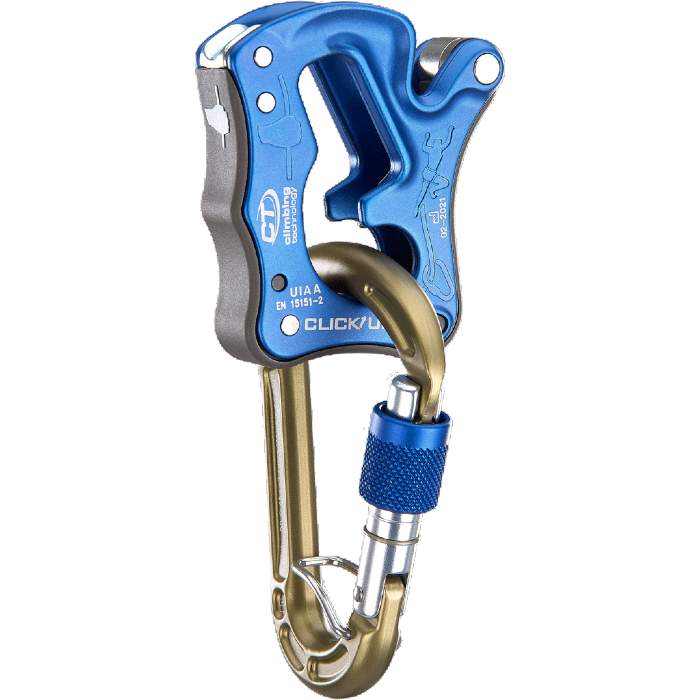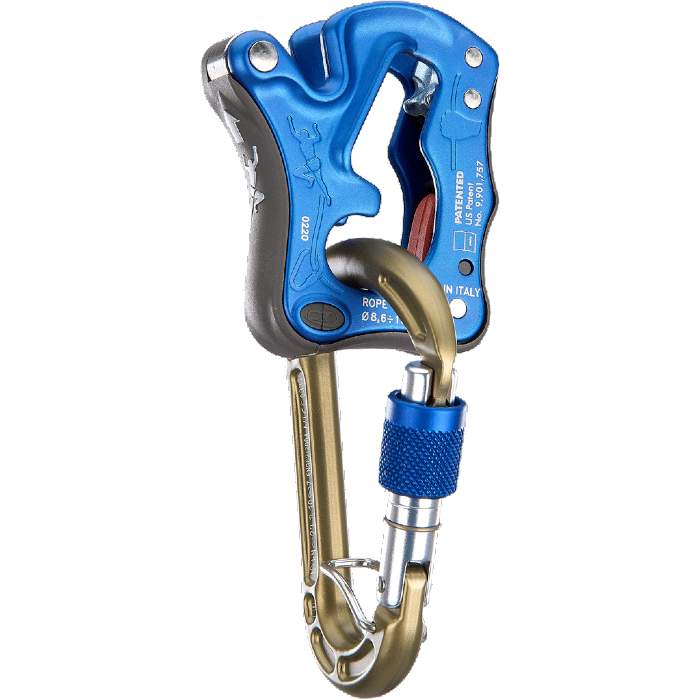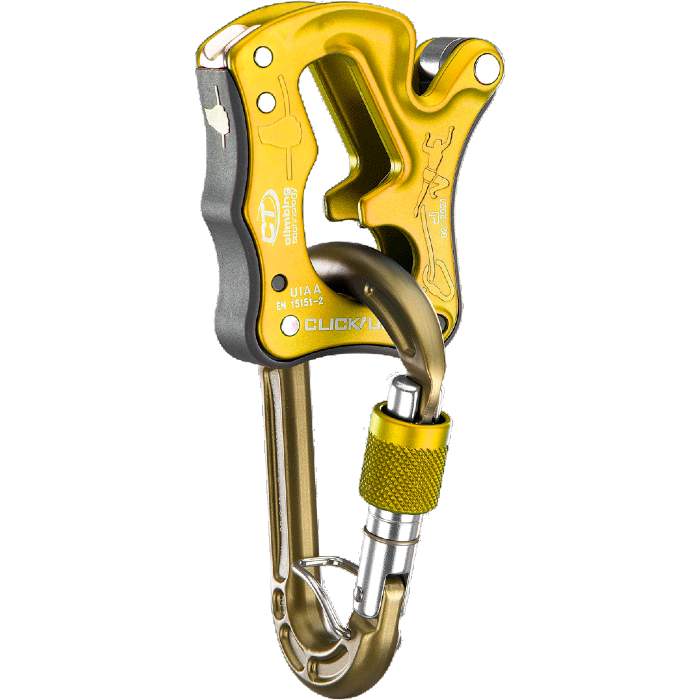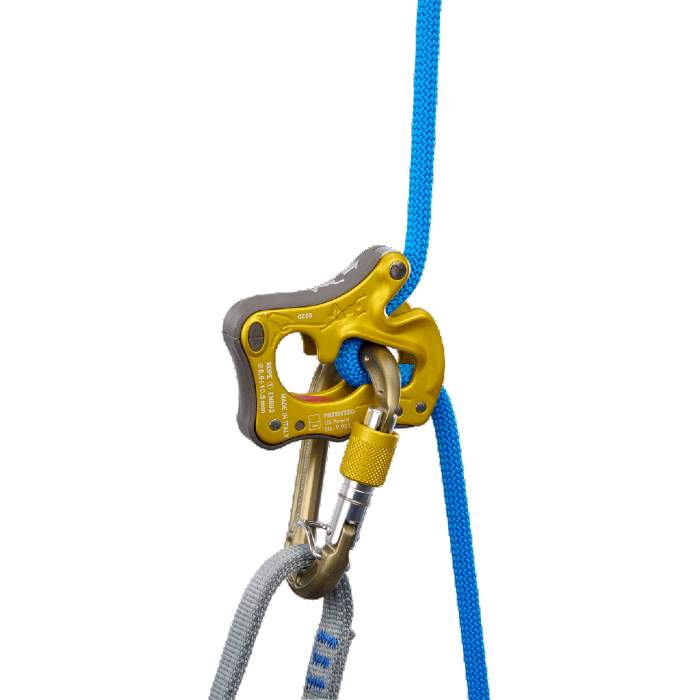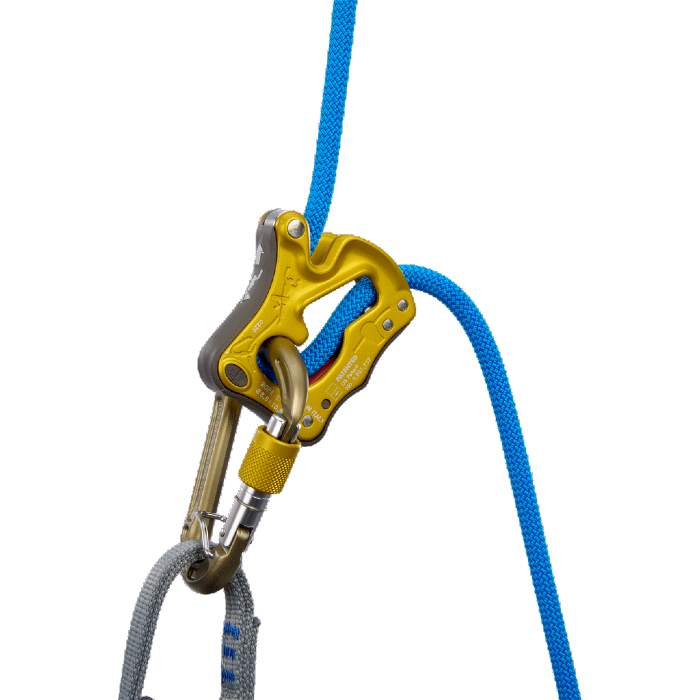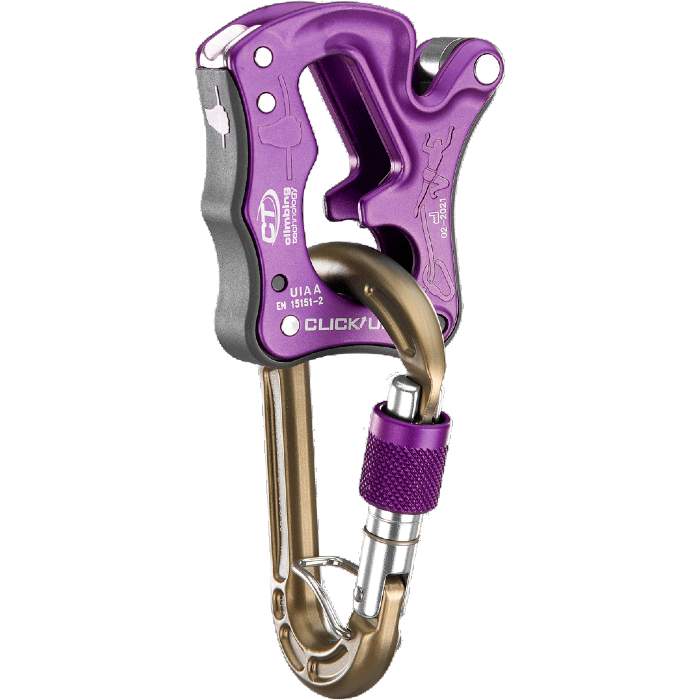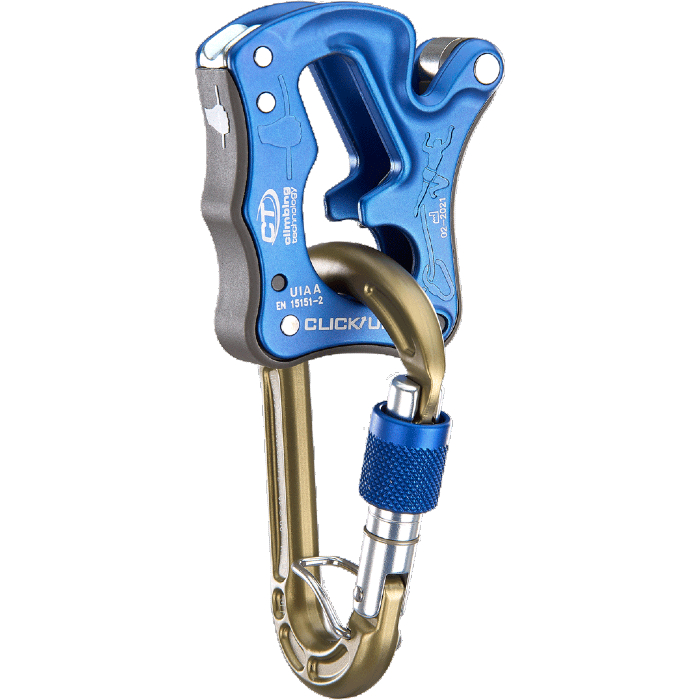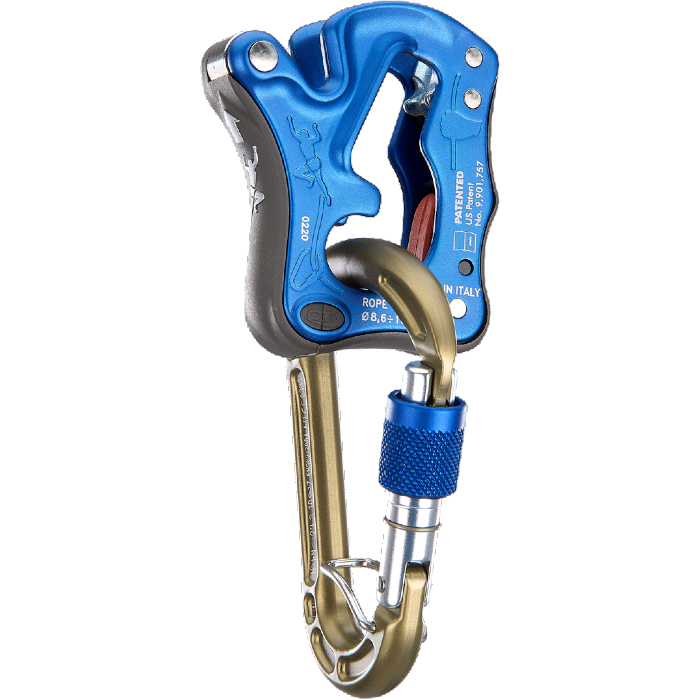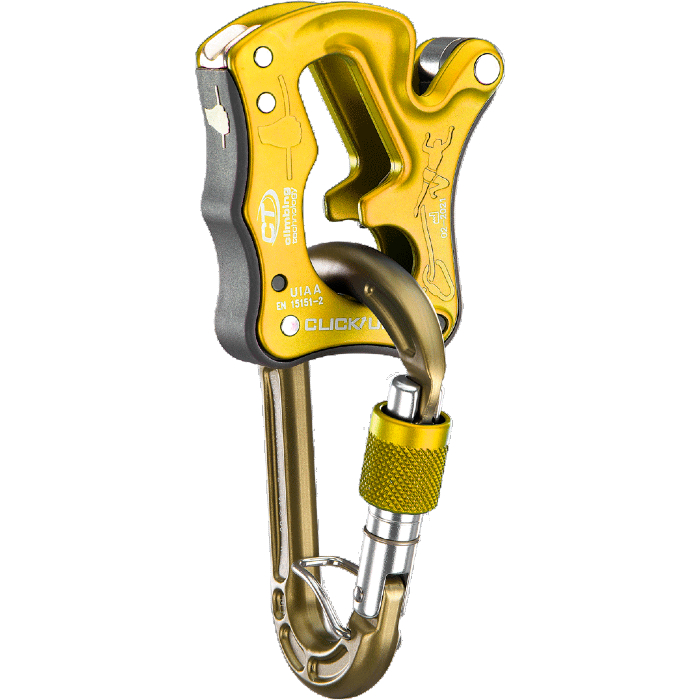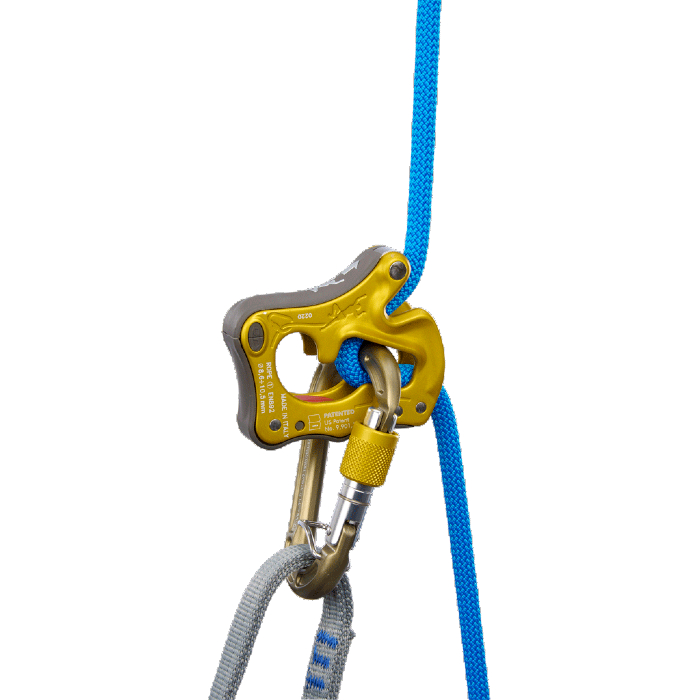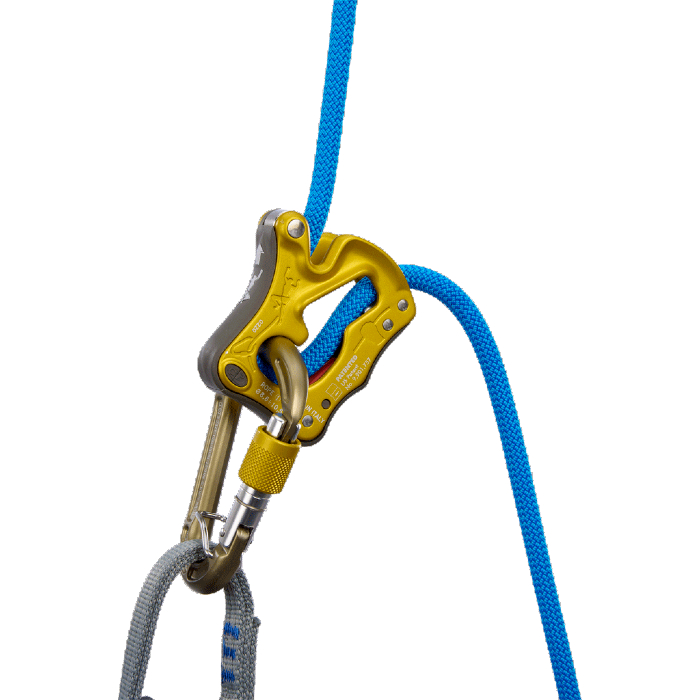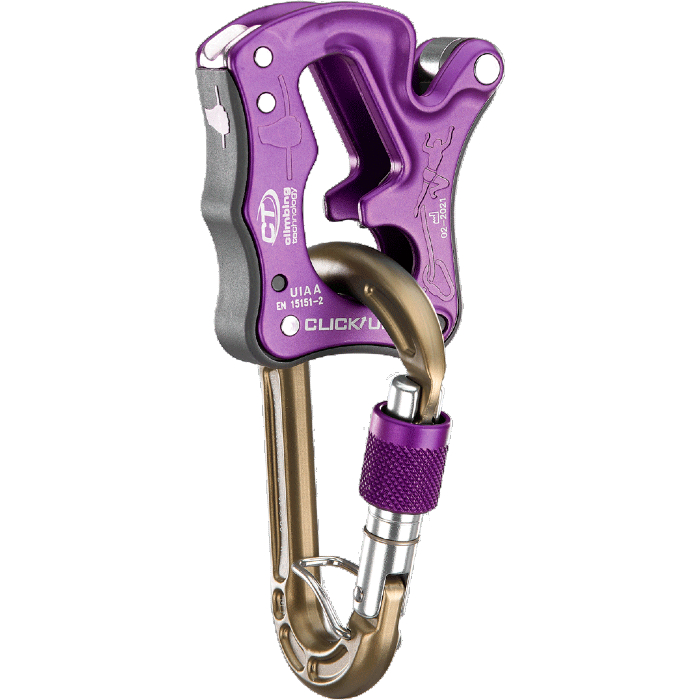Click Up
Description
This small tool, so innovative and ingenious, marks a new era in the vast world of belay devices. The Click Up operates without the need to act on levers and moving parts. In the event of a climber fall, the rope is blocked by the HMS belay biner. For lowering, the game is even easier: a slight pressure on Click Up and the rope runs at the speed that we want! In the event of excessive pressure or unintentional release, the device will lock.
Retail price
This Product is Hard to Find.
We don’t know where you can buy this item online in the US. We’ll continue to check all the major retailers and will update this page as soon as we find one.
If you know where to find this online in the US, let us know, and we’ll add the link.
Device Type  Device TypeTubeThe most commonly used belay type also called an “ATC” or “tuber.” Other than a distinction between other belay device types, “Tube” is a rarely used term, most climbers just assume you're talking about this style when they refer to your "belay device." 
Figure 8Mostly used in rescue, canyoneering, tactical, work safety, or by old school climbers and rappellers. One reason they went out of popularity with recreational climbers is because they tend to create twists in the rope. 
Brake AssistThese devices assist in stopping the rope when a climber falls or hangs on the rope. 
Often referred to as “auto-blocking” but that’s not the official terminology because no belay device should be assumed to work automatically by itself, even if it feels like it does (or does most the time). PlateWhen simplicity is a must, or you started climbing before Tubers were the norm. Bonus: They tend to be very light weight. 
DescenderFor rappelling, not for belaying a lead climber or top-roping. 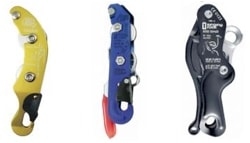 |
Brake Assist - Tube |
Weight (g)  Weight (g)In grams, the weight, as stated by the manufacturer/brand. |
115 g |
Belay Brake Assist  Belay Brake AssistThis is when the belay device significantly reduces the amount of holding power the belayer must exert to stop a fall and hold a climber. This is also called "assisted-braking" as the device must hold a significant amount of the climber’s weight; this term does not include friction-adding "teeth" found on some tube style belay devices. Confusingly referred to as “auto-blocking” or “auto-locking” these terms wrongly imply the device will always, automatically, stop a fall or hold a climber even if the belayer/rappeller is hands-free. These devices are not meant to be used without a hand on the braking side of the rope; the belayers/rapppeller brake hand should always be on the brake rope. Worth ConsideringMost of the mechanical brake assist devices only hold a single strand of rope and are not capable of double-strand rappelling (the most common method of rappel). |
Yes |
| Rope Options | 1 rope only |
Guide Mode  Guide ModeThis is when you belay directly off the anchor instead of your harness. Guide mode is helpful if you climb outdoors a lot because it reduces the holding power required from the belayer. When your partner falls or rests, the weight of the climber is held mostly by the anchor and the belay device. Tubers and PlatesWhen belaying in "guide mode," the tubers and plates turn auto-blocking. During a fall, the climbing rope pinches the slack rope, completely stopping the movement of either rope. A common guide mode setup shown below. 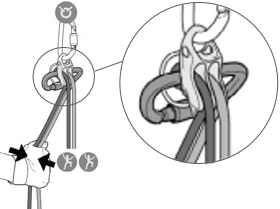
Mechanical Brake Assist DevicesThere is no difference in the functionality of the device. A brake-hand should always be on the rope to ensure the climber is caught in the case of a fall. A common guide mode setup shown below. 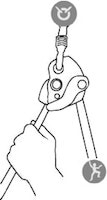
Where guide mode is used
Learn Morehttp://www.climbing.com/skill/essential-skills-auto-blocking-belay-devices/ |
No guide mode |
Teeth  TeethTeeth are only seen on tube devices. They add friction that helps grip the rope for more belaying control. This is helpful for belaying heavier climbers. Teeth are becoming standard on new tube devices. 
Worth ConsideringTeeth do wear out. You can limit wear by rappelling on the side without teeth (if you don’t need the extra friction). Once they’re worn, you’ll still have a usable belay device, just less friction. |
No |
Rope Range (mm)  Rope Range (mm)The range of rope diameters, in millimeters, that the manufacturer/brand specifies can safely be used. This is the best case scenario and does not necessarily take into consideration that certified ropes have a tolerance of +/- .3 mm. Recently, manufacturers have started to add an "optimized" rope range -- this is the range that will result in the nicest handling of the belay device. | 8.6 mm - 10.5 mm |
Certification  CertificationsThe main climbing gear certifications are CE and UIAA--and normally the UIAA creates the rules that the CE body also supports. When possible, we try to list all the certifications the product carries. To sell a climbing product in Europe, the device must be CE certified. There are no official requirements to sell climbing gear in the US. The UIAA certification is a voluntary process. Learn MoreRock and Ice Certifications Guide |
EN, UIAA |
A brilliant piece of kit that renewed my faith in the ability of climbing companies to continually innovate. Of special note is the ease of usability for quick feed to leaders while retaining safety. Great for inexperienced belayers and teams with a mis-matched weight. Simple to use correctly and very hard to use incorrectly for belaying but shouldn't be used for abseiling. Overall though, a fantastic assisted-braking belay device and it comes in at a very good price of £45.
Coming from the Italian company Climbing Technology, the ClickUp has a minimal following in the U.S. climbing community, but it proved successful in our field tests. In many ways, it behaves like a tube-style device: You load the rope in a similar way, and you lock off with your brake hand just as you would with an ATC. However, in a fall, your belay biner “clicks up” inside the device to apply more braking force, so you can hold a falling or hanging climber with minimal effort. When it’s time to lower, you press out on the device’s body and pay out slack with your brake hand. We found the ClickUp locks quickest when you’re belaying a heavier climber or a leader fall; it sometimes didn’t lock right away with a toproping “take,” a lightweight climber, or lots of rope drag. But as long as you brake as you would with a tube-style device, it manages falls just fine—even if you mistakenly load the rope backwards in the device, as one of our editors did. (Doh!) Our testers gave the ClickUp a 6 on the “automatic” scale, a relatively dynamic belay that could be helpful if a climber prefers softer catches and the belayer prefers more control. We also found the ClickUp works best at the lower end of the device’s 9mm to 10.5mm range; with thicker ropes, some testers found it tough to pull slack fast enough. At just 4.3 oz., this is one of the lightest assisted-braking devices, and it comes at reasonable price.
Video starts talking about Click Up at 1:01
Audio is noisy but worth watching.
How to use Click Up correctly and safely in details with instructional pictures.
This document shows how to tell exactly when you're gear was made via the individual serial number.

